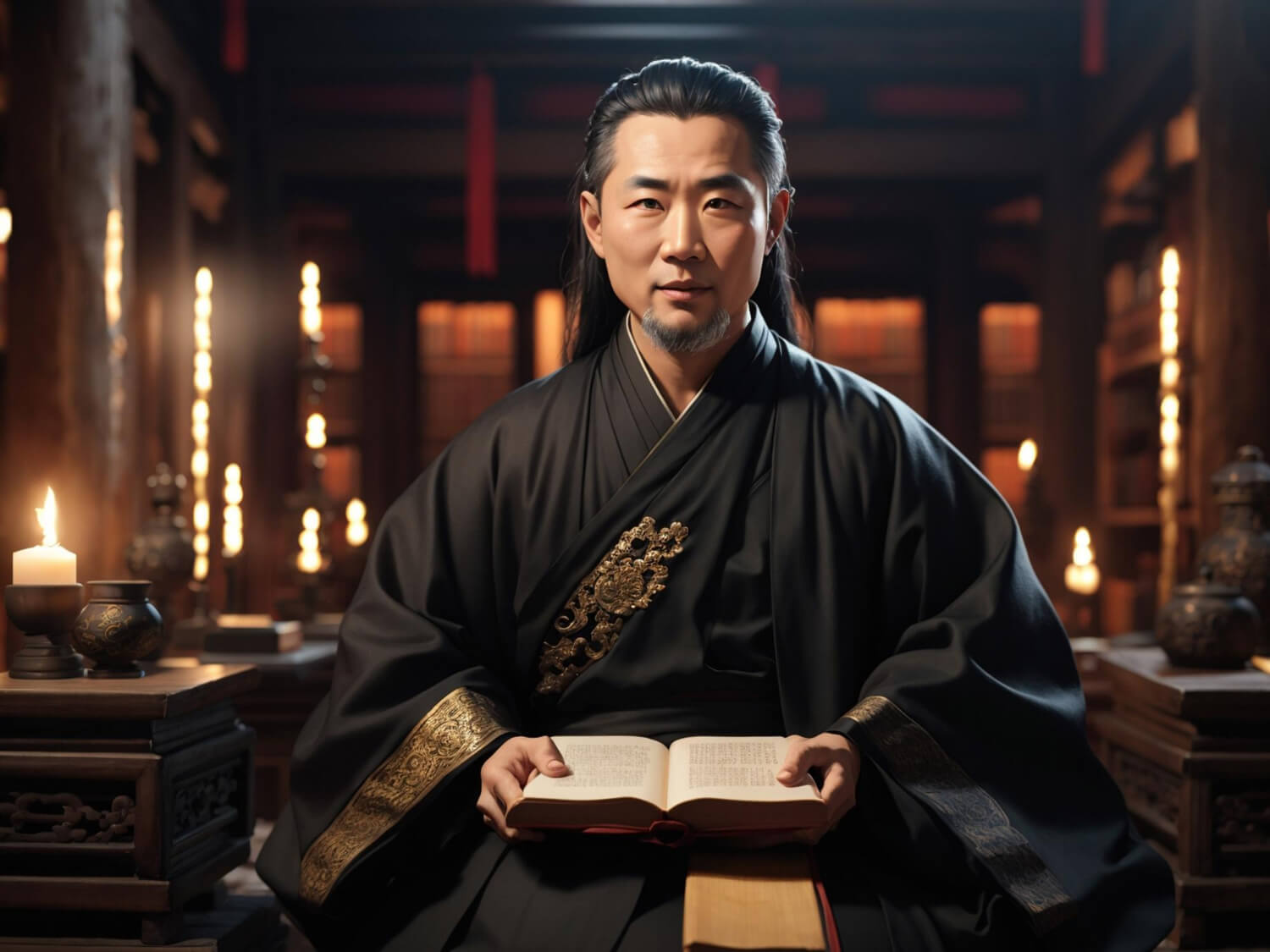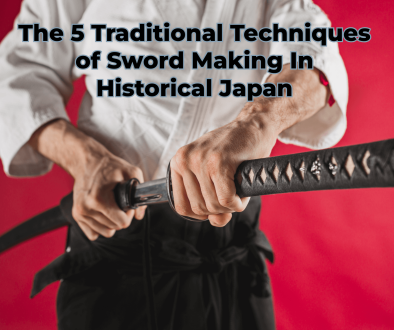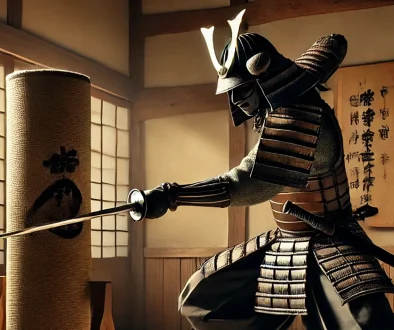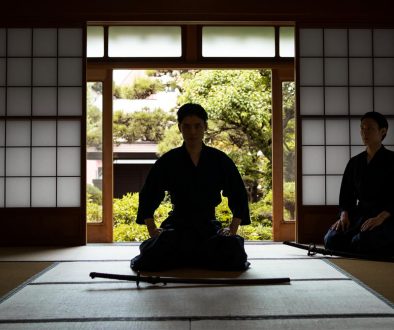Samurai Sorcerer of the Heian Shadows
Abe no Seimei was an esteemed demon-slaying wizard from the Heian period who is revered as one of Japan’s legendary onmyoji (evil spirits exorcizers). His legend has spread far and wide.
He specialized in divination, magic, rituals, prayers, and lawmaking – making him revered at many Shrines, including Seimei Jinja in Kyoto, and prevalent in manga, anime, and films.
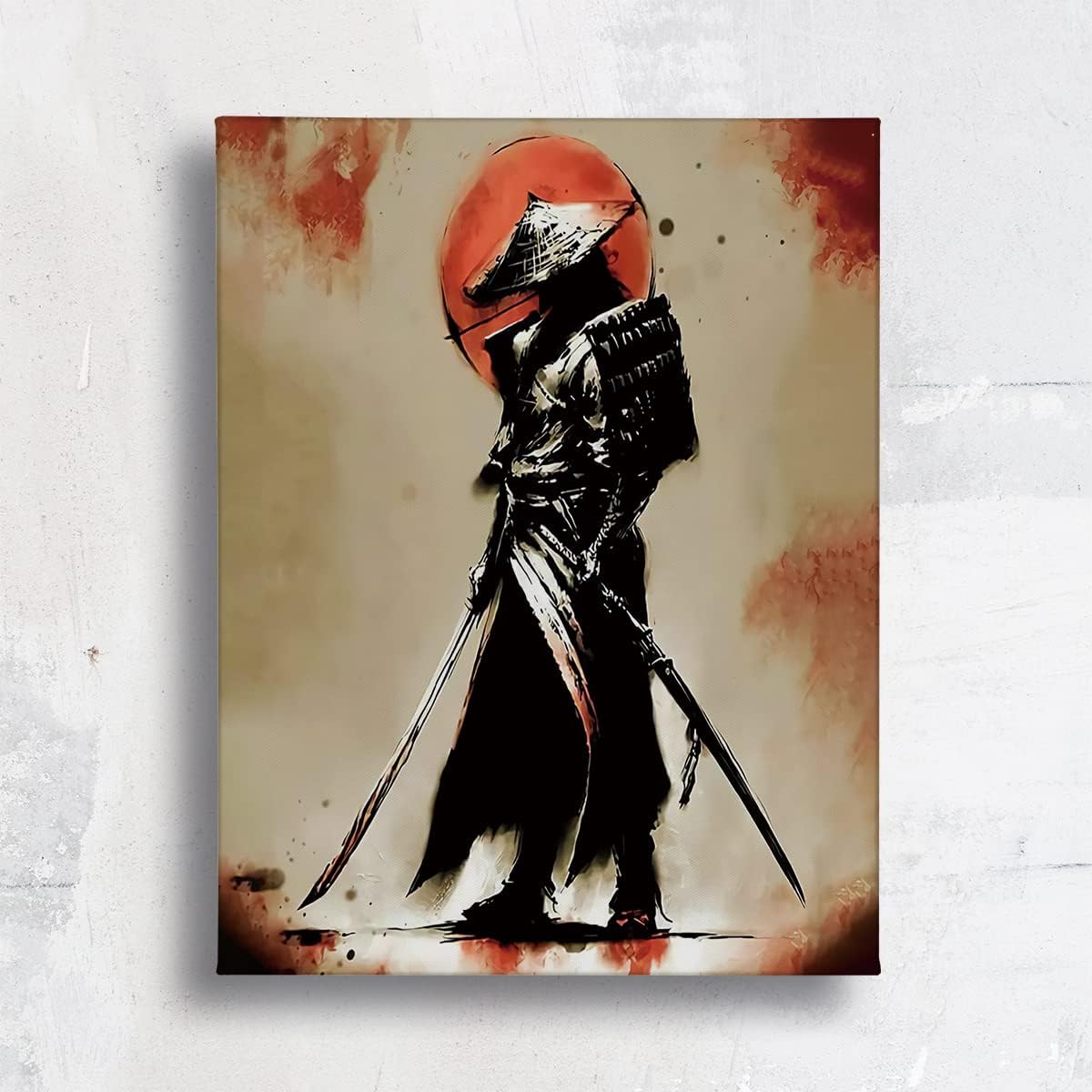
Early Life and Mystical Beginnings of Abe no Seimei
Abe no Seimei, a prominent figure during the Heian Period, was renowned as an expert practitioner of onmyōdō, a unique Japanese esoteric tradition influenced by Chinese philosophy (Wu Xing), combined with native Shinto, Buddhist, and Taoist practices. He served the Heian court in the distinguished role of an onmyoji, a divination specialist. His responsibilities encompassed a vast range, from driving out evil spirits from Kyoto to creating calendars and offering spiritual advice on state matters. This esteemed position allowed him to offer prayers for the health of the Imperial household and predict celestial events, further solidifying his revered status at court.
Legend says that Abe no Seimei, born of a human father and a kitsune spirit mother, Kuzunoha, straddled two worlds. Under Kamo no Tadayuki’s mentorship, Seimei grappled with his dual nature. His kitsune heritage occasionally drove him to mischief and manipulation, casting shadows over his extraordinary abilities. Yet, Tadayuki’s guidance ensured these malevolent tendencies were but fleeting moments in an otherwise illustrious life.
Residing near Ichijo-modori Bridge in Kyoto, an area considered by many to be the entrance to the underworld and a portal for evil spirits into the city, Seimei’s presence further positioned him as a guardian against these entities, safeguarding both the palace compounds and the residents of the capital.
Master of Onmyōdō: The Mystical Journey of Abe no Seimei
Onmyōdō, translated as “the Way of Yin and Yang,” was a traditional Japanese esoteric cosmology. It blended principles from Chinese philosophy, particularly the concepts of Yin and Yang and the five elements, with native Shinto beliefs and other imported teachings from Buddhism and Taoism. Practitioners of onmyōdō were known as onmyoji, and they played pivotal roles in Japanese courts, providing a range of services from astrological predictions and calendar-making to rituals for warding off evil spirits and ensuring good fortune.
Abe no Seimei stands out as a pinnacle in the history of onmyōdō. His prowess was due to innate talent and rigorous training and study. As a young apprentice, he was mentored by the previous onmyoji, Kamo no Tadayuki. Under Tadayuki’s guidance, Seimei was exposed to deep mystical teachings and practices, sharpening his skills and understanding of the esoteric arts.
But what truly distinguished Seimei was his acute sensitivity to the supernatural. He possessed a heightened ability to sense oni (demonic spirits) and other ethereal entities, often preemptively detecting their presence. This gift was not just about perception; Seimei could interact with, and often neutralize, these spirits, ensuring the safety and well-being of the realm.
In addition to these mystical aspects, onmyoji like Seimei, were also grounded in empirical sciences. They were adept in astronomy, geomancy, and the intricate art of calendar-making. Seimei’s expertise in these areas ensured the imperial court continually sought his services.
To be an onmyoji, especially of Seimei’s caliber, was to be a bridge between the seen and the unseen, the tangible and the ethereal. It required a profound understanding of the universe’s workings in its physical manifestations and more elusive, mystical dimensions. Abe, no Seimei’s legacy as a Master of Onmyōdō is a testament to his unparalleled mastery over this intricate and profound discipline.
Legends and Miracles: The Enigmatic Abe no Seimei
In the tapestry of Japan’s history, few figures are as shrouded in mystique as Abe no Seimei. Over time, the line between fact and fiction surrounding his life has become beautifully blurred, casting him as a historical practitioner of onmyōdō and a legendary figure capable of miracles.

Onmyōdō, rooted in Chinese philosophy and combined with native Japanese practices like Shinto, Buddhism, and Taoism, served as the foundation of Seimei’s power. With this knowledge, Seimei wasn’t just a scholar but a protector. He skillfully deciphered celestial patterns, predicting significant events like Emperor Kazan’s abdication with uncanny accuracy. This proficiency in forecasting was documented in texts like the Konjaku Monogatarishu.
His unparalleled skills inevitably drew envy and challenges from rivals. Yet, time and again, Seimei emerged unscathed, further fueling rumors of his immortality. Such was the depth of his legend that he has been likened to the Western wizard Merlin, a figure enveloped in magic, wisdom, and enigma.

Service to the Imperial Court: The Pinnacle of Abe no Seimei’s Influence
Abe, no Seimei’s unparalleled expertise in onmyōdō, didn’t just make him an esteemed figure in the annals of Japanese history; it solidified his indispensable role within the Imperial Court. Drawing from a complex blend of Yin Yang, Wu Xing principles, and uniquely Japanese adaptations, he was a protective and guiding force for the Emperor and the courtiers.
As an astrologer and diviner, Seimei’s insights into celestial patterns allowed him to predict vital events and potential threats. These predictions weren’t mere fortunetelling; they were precise readings based on a profound understanding of astronomy, cycles of the sun and moon, and the nuanced dance of stars in the sky. His mastery of Astronomical Manipulation, an esoteric art of modifying or interpreting star alignments, further honed this capability.
His residence at the Imperial Palace (Ichijo Modoribashi) wasn’t just a testament to his esteemed position. It became a hub of mystical activities, where he resided with significant figures from his life, including Kuzunoha, his legendary fox wife, and Yasuaki, his kitsune disciple. Within these walls, his role as protector shone brightest, performing purification rituals to shield the Emperor from maladies and evil forces.
Beyond protective duties, Seimei’s emblematic five-pointed star symbols, representing the five elements, became integral to various practices. They guided spatial designs and temporal uses, ensuring harmony and auspiciousness.
A testament to his profound impact, the Abe no Seimei-jinja stands in Kyoto, erected on his former residence’s grounds. It is a lasting tribute to a man whose life intertwined with the Imperial Court, guarding its sanctity and guiding its destinies with unparalleled knowledge and skills.
Legacy in Contemporary Consciousness
Abe no Seimei’s influence permeates contemporary Japanese culture, much like a historical luminary whose aura refuses to dim. Rooted in a time when the spiritual and the corporeal were intrinsically intertwined, Seimei’s legacy is a testament to Japan’s enduring connection to its mystical past.
Even today, Seimei’s name is synonymous with supernatural prowess and unparalleled onmyōdō expertise. His name often evokes the image of a protector, a guide through the spiritual realm’s murky waters, ensuring safety against evil forces. The tales of his uncanny ability to divine, predict, and protect are shared and retold, adding to the aura of the mythical figure he has become.
Modern representations of Seimei in popular culture, films, manga, and literature underscore his timeless appeal. He stands as a bridge between the world of the living and the ethereal, constantly reimagined and reintroduced to newer generations. Today’s artists and writers draw inspiration from his tales, often using his character to explore themes of love, power, duty, and the eternal battle between good and evil.
His legacy also finds homage in spiritual practices. The onmyōdō techniques and rituals he pioneered continue to influence certain esoteric Shinto practices, grounding them in tradition while allowing for adaptation and evolution.
For many, Abe no Seimei is more than a historical figure; he is a symbol of Japan’s rich tapestry of legends, an emblem of its spiritual heritage, and a beacon that continues to guide, inspire, and captivate the hearts and minds of those who encounter his story. Whether one believes in the supernatural tales attributed to him or not, his influence on Japanese culture and thought remains undeniable and profound. Although the figure is sometimes considered similar to Jesus and The Prophet Mohammed in other religious doctrines, he is not widely disregarded as fictional.
